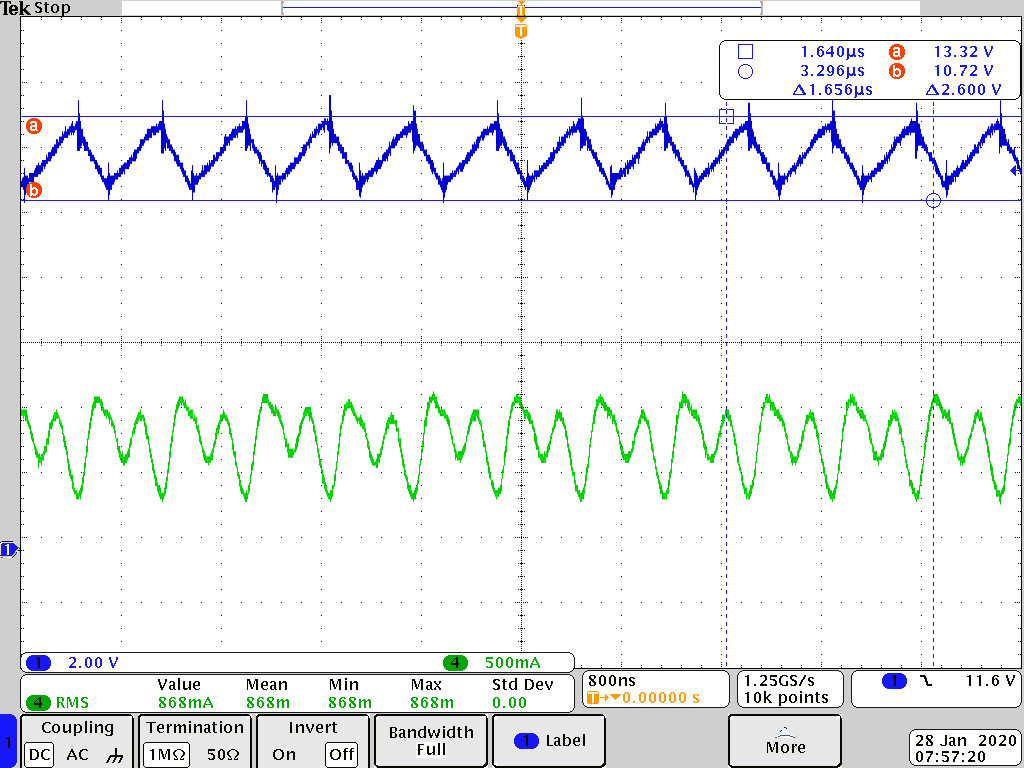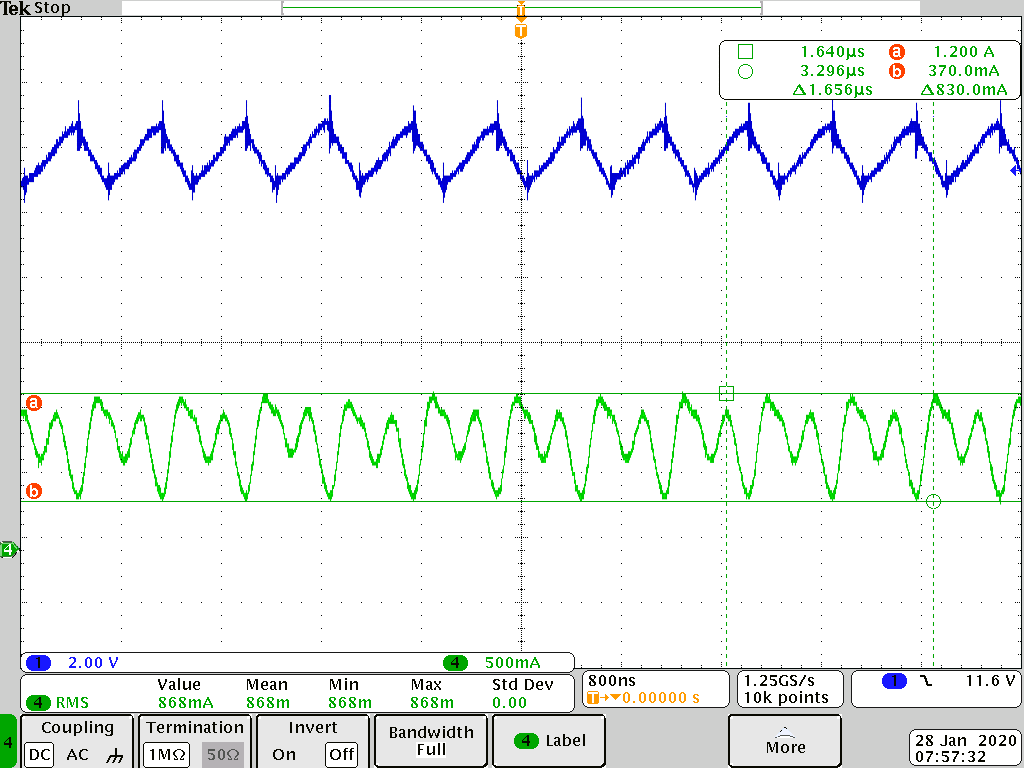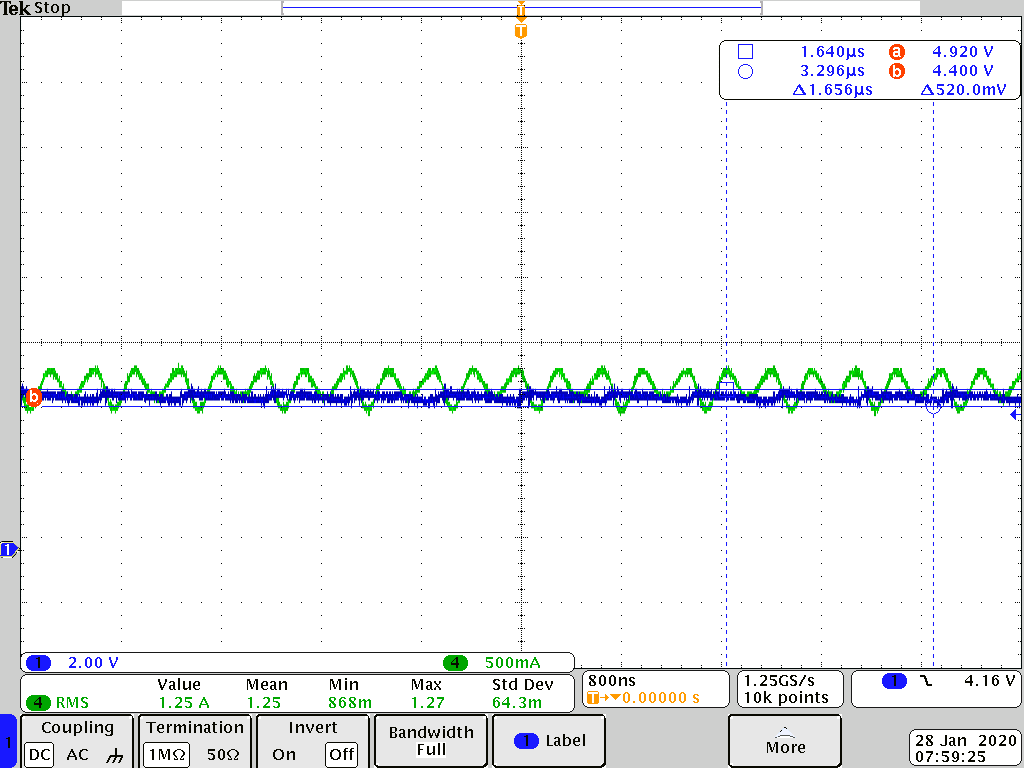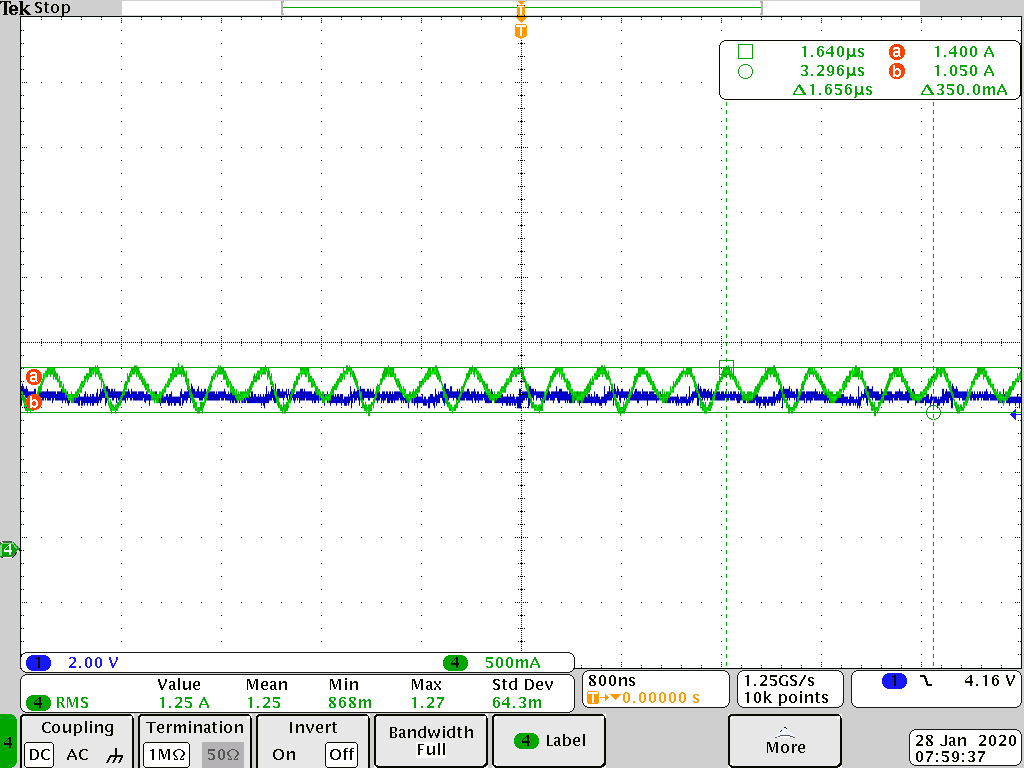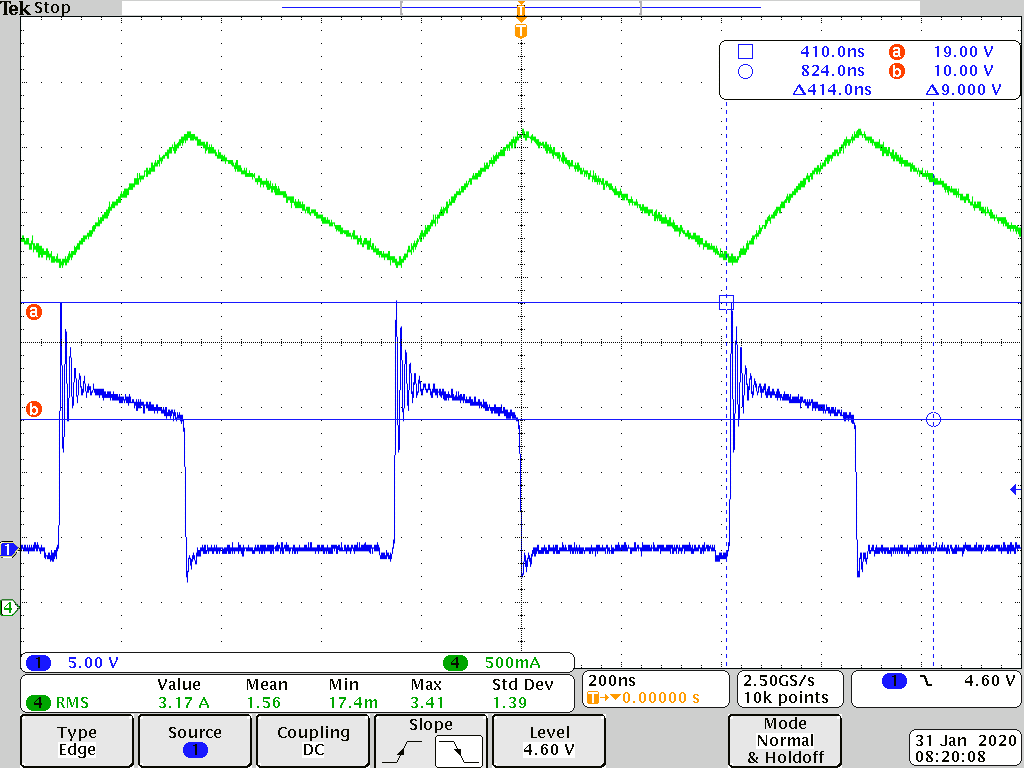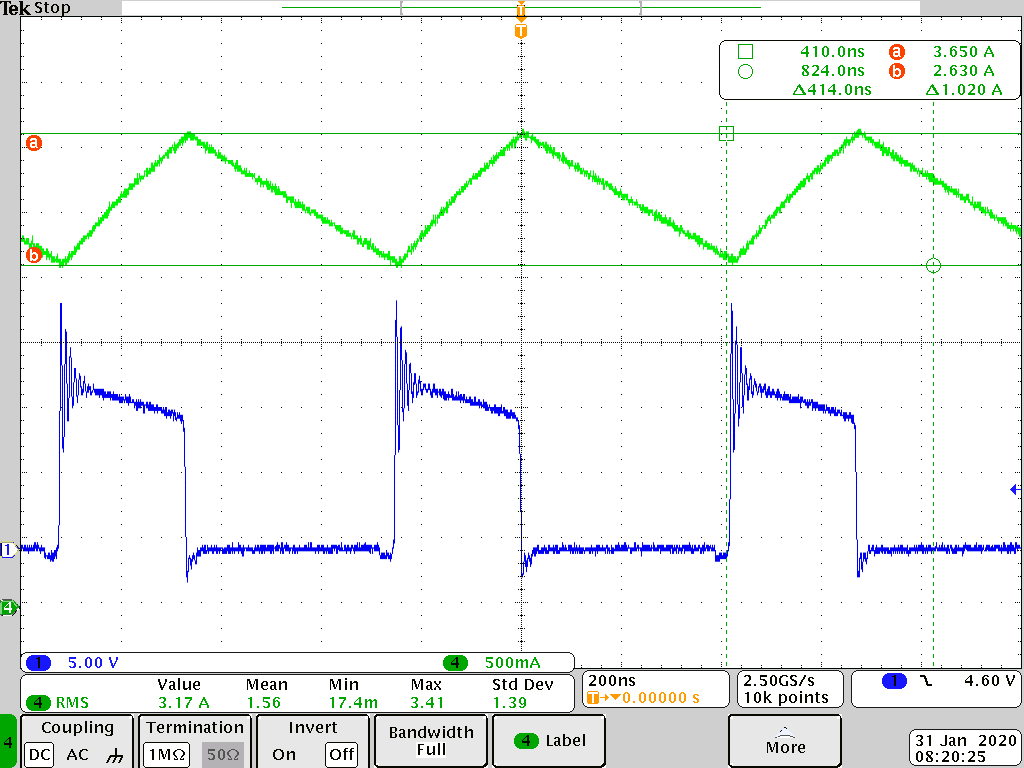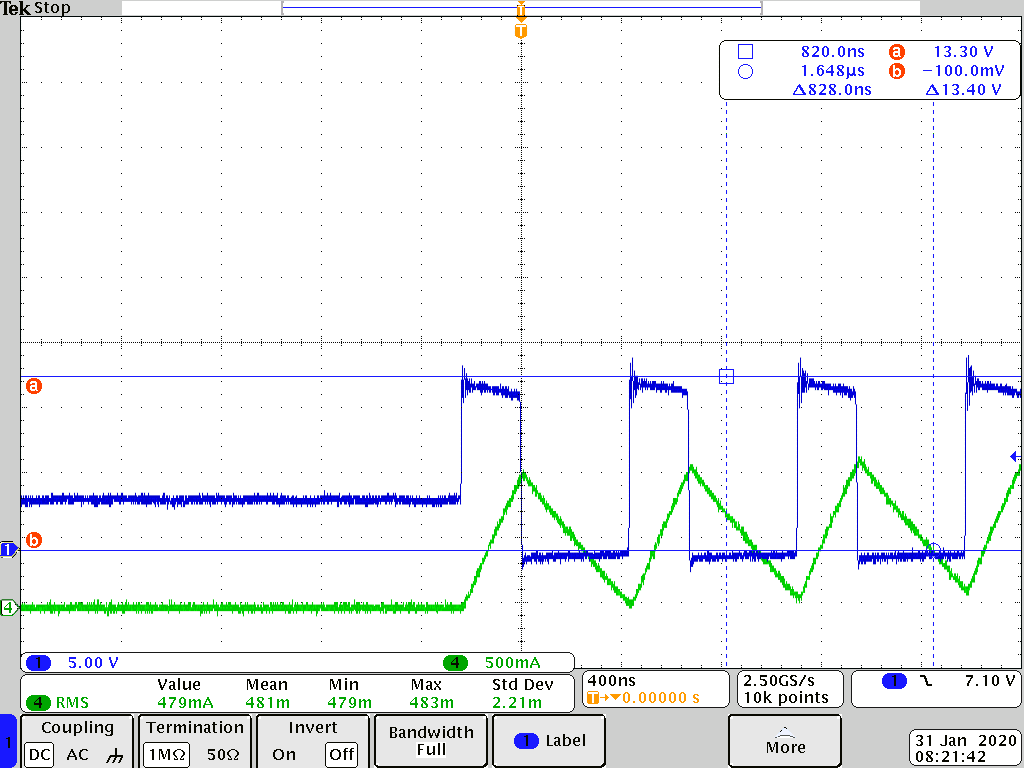Other Parts Discussed in Thread: BQ25890
I've been testing the BQ25895 and we have set Reg04 to the maximum 5A limit (0x4F). Battery voltage is 3.6V. Ilim pin is has a 215ohm resistor on it which limits input current to 1.6A. Whenever I charge with a 2.4A, 5V adapter I get 8 watts of power, which is about what I would expect. With the maxcharge adapter I only get 13W of power. I've confirmed the adapter is outputting 12V. I previously measured input voltage drop and it is about 400mV total at 2Amps, so I know that is reasonable given the constraints of most USB cables. I would expect about 18W with a maxcharge adapter.
Any thoughts on what might be the issue?


